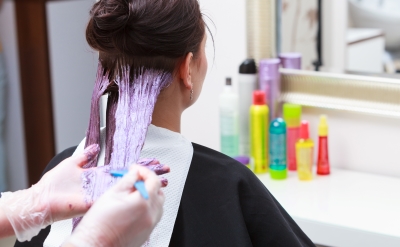
Does hair dye increase breast cancer risk?
A new study has investigated whether there is a relationship between hair products and breast cancer.
Breast cancer affects around 1 in 8 women in their lifetime. Breast cancer rates among non-Hispanic white women have been historically higher than non-Hispanic black women, but in recent decades, the rate of breast cancer among black women has increased. Today, breast cancer incidence between black and white women are similar.
A new study has stated that “black women are more likely to be diagnosed with aggressive tumour subtypes and to die after a breast cancer diagnosis.”
While scientists attempt to identify all risk factors associated with breast cancer, they are also keen to clarify why race-related disparities occur.
The study focuses on hair products – in particular, the researchers investigated hair dye and chemical hair straighteners, which are used to permanently or semi-permanently “relax” the hair.
Hair dye and breast cancer
Multiple studies have, in the past, suggested that hair dye could play a role in cancer. The author of this study explains, “Hair products contain more than 5,000 chemicals, including some with mutagenic and endocrine-disrupting properties.”
Older studies have also demonstrated that some chemicals found in hair dye are capable of inducing tumours in the mammary glands of rats.
Despite these results, previous studies that have focused on the relationship between hair products and breast cancer in human populations have produced inconsistent results.
The authors of this most recent research chose to include hair straighteners in their analysis due to previous studies ignoring them. In addition, the authors state that these straightening chemicals are “used predominately by women of African descent”.
Interestingly, hair product ingredients tend to vary depending on whether the product is being marketed to white or black women, and the authors aimed to investigate whether this may play a role in the disparity in breast cancer rates.
The researches took data from the Sister Study, which includes information from 50,884 women aged between 35 and 74 years. The women were followed for an average of 8.3 years. The women in the study had no personal history of breast cancer but had at least one sister who had been diagnosed with breast cancer.
During the analysis, variables were accounted for, including age, menopausal status, socioeconomic status, and reproductive history. In addition, the participants’ use of hair care products was also noted.
Women that used hair dye regularly in the year before enrolling in the study were 9% more likely to develop breast cancer.
When scientists looked closer, it was revealed that women who used permanent dyes every 5-8 weeks had an increased rate of breast cancer. Among white women, the risk increased by 8%; while among black women, the risk increased by as much as 60%.
No significant relationship was found between breast cancer risk and the use of semi-permanent or temporary hair dyes.
When focussing on chemical hair straighteners, it was discovered that women who used them every 5-8 weeks or more had a 30% increased risk of breast cancer. Although there was no significant difference between white and black women, it was noted that black women did appear to use these products more often.
Understanding the numbers
These figures must be put into perspective – the above percentages describe relative risk, which publishers often focus on due to the numbers appearing more dramatic.
For example, studies have shown that women who drink two or more alcoholic beverages daily have a 50% higher risk of developing breast cancer when compared to women who do not drink.
This does not mean, however, that they have a 50% chance of developing cancer.
In the general population, women have a 12% risk of developing breast cancer throughout their life. If this risk is increased by 50%, the risk is brought up to 18%. In this specific example, the risk increase is 6%. Although this percentage increase is still significant, it does not have the same impact as 50%.
In relation to the hair product study, the reported relative risk of a 60% increase in breast cancer risk among black women is a significant result. However, the absolute risk of a new cancer diagnosis in this study population was less than 1% per year.
This does not mean that the increase is not significant and important – it is simply important to understand the statistics in order to put the results into perspective.
Study limitations
As with all observational studies, the observed relationship may be dependent on other factors which the analysis did not account for.
Every study participant also had at least one first-degree relative who had received a breast cancer diagnosis. The authors explain that “this may limit the generalisability of the findings”.
“We are exposed to many things that could potentially contribute to breast cancer, and it is unlikely that any single factor explains a woman’s risk,” explains study co-author Dale Sandler, Ph.D. “While it is too early to make a firm recommendation, avoiding these chemicals might be one more thing women can do to reduce their risk of breast cancer.”
Tags: breast cancer, breast cancer awareness, cancer, chemical straightening, hair dye, hair products


